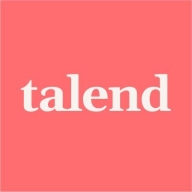

Talend Data Integration and Cribl are competitors in the data management space, each offering unique strengths. While Talend is favored for its pricing and customer support, Cribl is seen as delivering superior features that justify its cost.
Features: Talend Data Integration provides powerful ETL capabilities, robust connectivity, and advanced transformation features, ensuring seamless data integration from various sources. Cribl offers exceptional data control and experimentation features, optimizing data routing and processing. Cribl's innovative approach to data management gives it an edge in effectively managing complex data flows.
Room for Improvement: Talend could enhance its capability to handle larger data sets and improve its aesthetics in code generation. Its dependency on multiple components sometimes complicates integration processes. Cribl could benefit from more intuitive usability and reduced complexity in setup. Its pricing may also pose challenges for smaller enterprises, and its advanced features sometimes require a steep learning curve.
Ease of Deployment and Customer Service: Talend offers straightforward deployment with a supportive customer service structure, which facilitates easy integration within existing systems. Cribl's deployment is optimized for quick setup in data-centric environments, and its customer support is responsive, guiding users through complex configurations. Talend, known for broader accessibility, contrasts with Cribl's rapid implementation that may need more initial guidance.
Pricing and ROI: Talend's setup costs are generally more affordable, offering a favorable return on investment through competitive pricing and effective integration solutions. Cribl's higher costs are justified by its advanced features and data routing efficiency, appealing to those prioritizing comprehensive data management. Talend is more accessible price-wise, while Cribl offers greater long-term value through its advanced capabilities.


Cribl optimizes log collection, data processing, and migration to Splunk Cloud, ensuring efficient data ingestion and management for improved operational efficiency.
Cribl offers seamless log collection directly from cloud sources, allowing users to visually extract necessary data and replay specific events for in-depth analysis. It provides robust management of events, parsing, and enrichment of data, along with effective log size reduction. Cribl is particularly beneficial for migrating enterprise logs, optimizing usage, and reducing costs while streamlining the transition between different log management tools.
What are Cribl's most important features?
What benefits and ROI should users look for?
Cribl is widely implemented in industries requiring extensive data management, such as technology and finance. Users leverage Cribl to handle log collection, processing, and migration efficiently, ensuring smooth operation and effective data analysis. It aids in managing temporary data storage during downtimes and better handling historical data, preventing data loss and allowing extended periods for viewing statistics and monitoring trends.
Talend Data Integration efficiently handles data transformation and integration with ease, supporting complex business needs. It enables seamless data management across all sources.
Talend Data Integration offers a robust platform for managing and transforming data. It connects disparate systems, enabling data flow across various environments. Users benefit from its ability to streamline processes and improve data accuracy. Its user-friendly interface and flexibility make it a preferred choice for data integration experts.
What are the key features of Talend Data Integration?In finance, Talend Data Integration enhances transaction data processing and compliance reporting. In healthcare, it ensures accurate patient data management, while in retail, it optimizes inventory and customer data analysis. Its adaptability makes it valuable across multiple sectors, addressing specific industry requirements.
We monitor all Observability Pipeline Software reviews to prevent fraudulent reviews and keep review quality high. We do not post reviews by company employees or direct competitors. We validate each review for authenticity via cross-reference with LinkedIn, and personal follow-up with the reviewer when necessary.